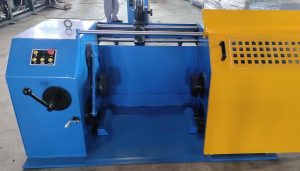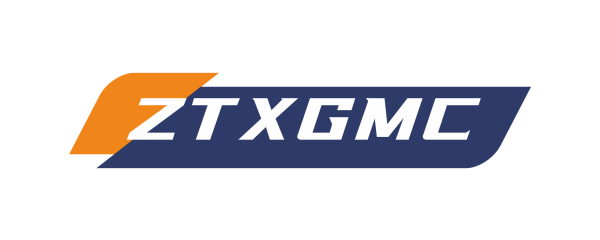Aluminum Welding Wire Wire Drawing Machines
The Importance of Proper Maintenance and Calibration of Wire Drawing Machines for Aluminum Welding Wire Production
Aluminum welding wire is a crucial component in the welding industry, used in a variety of applications from automotive to aerospace. The production of aluminum welding wire involves a complex process that requires precision and accuracy. One key aspect of this process is the use of wire drawing machines, which are essential for shaping and forming the wire to the desired specifications.

Wire drawing machines play a critical role in the production of aluminum welding wire, as they are responsible for pulling the wire through a series of dies to reduce its diameter and improve its surface finish. These machines must be properly maintained and calibrated to ensure that the wire is produced to the highest quality standards.
Proper maintenance of Wire drawing machine for Aluminum Welding Wire is essential to prevent downtime and ensure consistent production. Regular maintenance checks should be performed to inspect the machine for any signs of wear or damage. This includes checking the alignment of the dies, lubricating moving parts, and replacing any worn components. By keeping the machine in good working condition, manufacturers can avoid costly repairs and delays in production.
In addition to maintenance, calibration of wire drawing machines is also crucial for producing high-quality aluminum welding wire. Calibration involves adjusting the machine settings to ensure that the wire is drawn to the correct diameter and surface finish. This process requires precision and accuracy to meet the specifications required for welding applications.
Proper calibration of wire drawing machines is essential for achieving consistent results in aluminum welding wire production. If the machine is not calibrated correctly, it can lead to variations in wire diameter and surface finish, which can affect the quality of the welds. By regularly calibrating the machine, manufacturers can ensure that the wire meets the required standards for strength, ductility, and corrosion resistance.

To maintain the quality of aluminum welding wire, manufacturers must invest in proper maintenance and calibration of their wire drawing machines. This not only ensures consistent production but also helps to extend the lifespan of the equipment. By following a regular maintenance schedule and performing calibration checks, manufacturers can avoid costly downtime and production delays.
In conclusion, the importance of proper maintenance and calibration of wire drawing machines for aluminum welding wire production cannot be overstated. These machines play a critical role in shaping and forming the wire to meet the required specifications for welding applications. By investing in regular maintenance and calibration, manufacturers can ensure that their wire drawing machines operate efficiently and produce high-quality aluminum welding wire. This, in turn, helps to maintain the integrity of the welds and ensures the safety and reliability of the finished products.
Advantages of Using Aluminum Welding Wire in Welding Applications
Aluminum welding wire is a popular choice for welding applications due to its numerous advantages. One of the main benefits of using aluminum welding wire is its lightweight nature. Aluminum is a lightweight metal, making it easier to handle and maneuver during the welding process. This can be especially beneficial when working on projects that require a high level of precision and control.
In addition to its lightweight nature, aluminum welding wire is also known for its high strength-to-weight ratio. This means that aluminum welding wire can provide strong, durable welds without adding unnecessary weight to the finished product. This can be particularly advantageous in industries where weight is a critical factor, such as aerospace or automotive manufacturing.

Another advantage of using aluminum welding wire is its excellent corrosion resistance. Aluminum is naturally resistant to corrosion, making it an ideal choice for welding applications in environments where exposure to moisture or other corrosive elements is a concern. This can help to extend the lifespan of the welded components and reduce the need for frequent maintenance or repairs.
Aluminum welding wire is also known for its high thermal conductivity. This means that aluminum welding wire can quickly and efficiently transfer heat during the welding process, resulting in faster welding speeds and improved productivity. Additionally, the high thermal conductivity of aluminum welding wire can help to minimize the risk of distortion or warping in the welded components, resulting in a more precise and accurate finished product.
One of the key advantages of using aluminum welding wire is its versatility. Aluminum welding wire can be used in a wide range of welding applications, including MIG welding, TIG welding, and flux-cored arc welding. This versatility makes aluminum welding wire a popular choice for welders working on a variety of projects, from small-scale repairs to large-scale fabrication.
Furthermore, aluminum welding wire is known for its excellent weldability. Aluminum is a highly reactive metal, which can make it challenging to weld using traditional welding techniques. However, aluminum welding wire is specifically designed to address these challenges, providing welders with a reliable and effective solution for welding aluminum components.

In conclusion, aluminum welding wire offers a range of advantages that make it a popular choice for welding applications. From its lightweight nature and high strength-to-weight ratio to its corrosion resistance and excellent thermal conductivity, aluminum welding wire provides welders with a versatile and reliable option for a wide range of projects. Whether you are working on a small repair job or a large-scale fabrication project, aluminum welding wire can help you achieve strong, durable welds with precision and efficiency.




